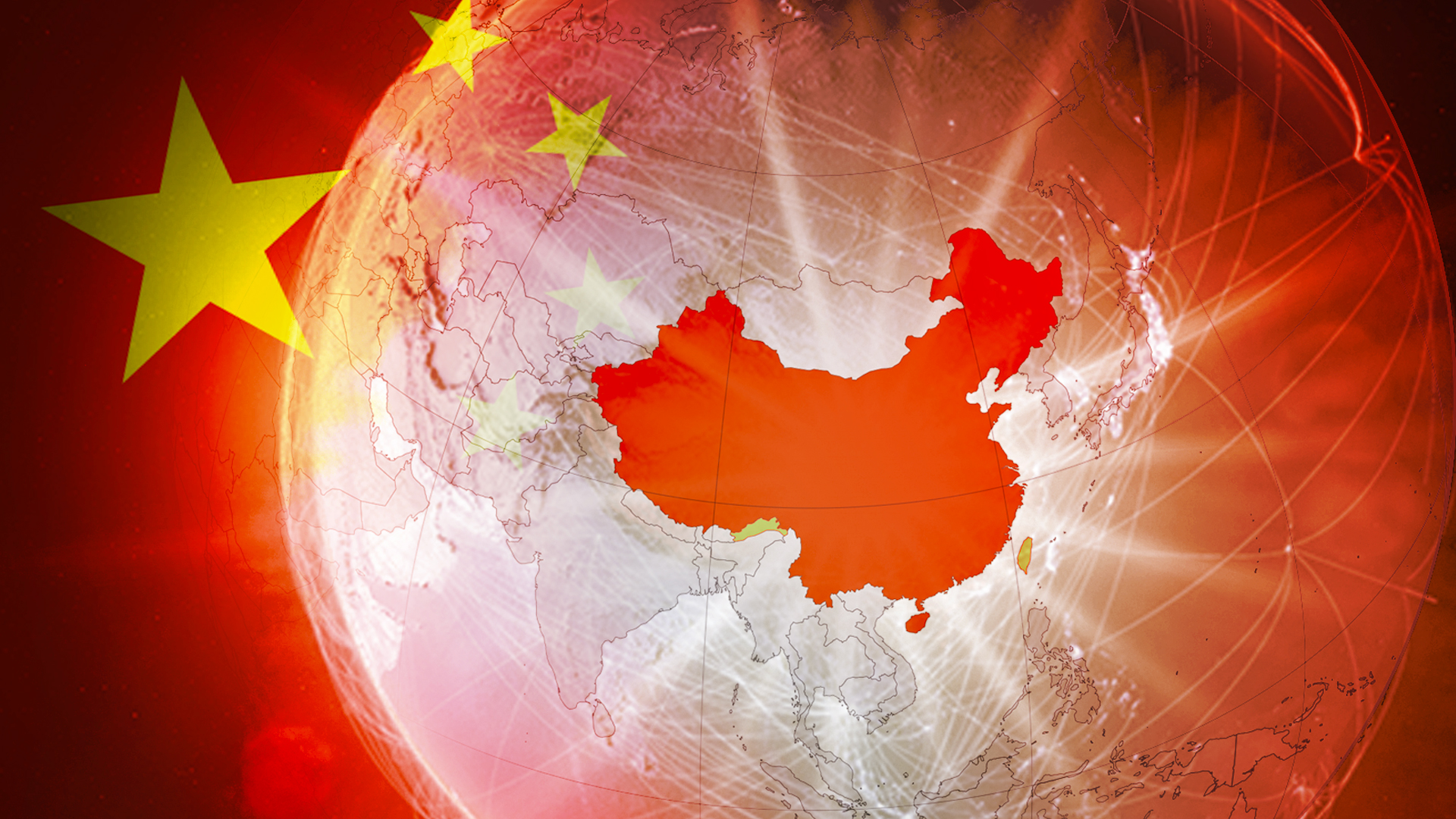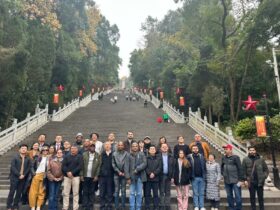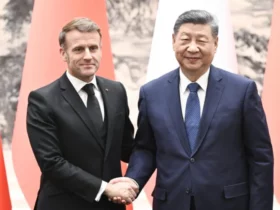This week, the IMF presented its World Economic Outlook Report of 2020, which provides an overview of the world economy. The reports coming out of this conference are interesting, and contain information that America does not want to hear nor accept, such as the fact that China has dethroned the US and become the world’s largest economy, a fact that was concluded by calculating the purchasing power parity, which both the IMF and the CIA have collectively decided is the best method of measurement to compare national economies.
The IMF Report shows that China’s economy is one-sixth bigger than that of America, according to Purchasing Power Parity (PPP). While the national income of the United States of America is $20.8 trillion, that of China is $24.2 trillion.(1) Despite this precise determination from the IMF and the CIA, both of whom are considered the most authoritative entity in the Atlantic system, the Western press continues to write that the US economy is number one, with the exception of The Economist.
WHO HITS HARDEST?
Power relations determine the chosen method of measuring the economic size of a country. After the establishment of the IMF, the method imposed by the US was to use the US economy as a basis when comparing other economies. They used a measure called MER (market exchange rate) to calculate GDP. The US economy was half of the size of the world economy after the Second World War. For the economies of other countries, this method was used in the following way: Each country collects all the goods and services produced by their own economies in their own currency and then converts this sum into US dollars at the current “market exchange rate”. The value of all goods and services produced in China is estimated to be 102 trillion Yuan for 2020. According to the current exchange rate, 1 Dollar is 7 Yuan, and based on this calculation China will have a MER GDP of $ 14.6 trillion, whereas, the GDP of the USA $20.8 trillion.
THE US’ DECEPTIVE METHODS
However, this comparison assumes that $1 buys in China as much as it buys in the US, and in reality, this is not the case. The Economist created the “Big Mac Index” in order to make this comparison easier to understand. According to this index, a Chinese consumer can buy a Big Mac for 21 Yuan in Beijing, when converted 21 yuan to the current rate, he will have $3 in the US, but he will only be able to buy half a Big Mac with this money. When this calculation is applied to other products, it means Chinese people will have to pay twice the price to get the products Americans buy.
In order to make meaningful comparisons of prices across countries, a wide range of goods and services must be considered. However, this one-to-one comparison is difficult to achieve due to the sheer amount of data that must be collected, and the complexity of the comparisons that must be drawn. To help facilitate this comparison, the University of Pennsylvania and the United Nations joined forces to establish the International Comparison Program (ICP) in 1968.
Having acknowledged this fact, the IMF adopted a more appropriate macroeconomic analysis metric called PPP to compare national economies. The PPP metric, which was developed by the Swiss economist Gustav Cassel in The Present Situation of the Foreign Trade in 1916, was abandoned after World War II. However, since 1968, the beginning of an upside down period for the US, purchasing power parity was put into practice with the International Comparison Program. PPP, which was adopted by various units of the UN, was finally accepted by the IMF. (2)
THE CIA AGREES
As stated by the IMF’s Economic Outlook Report, “PPPs are used to convert different currencies to a common currency and equalize their purchasing power by eliminating differences in price levels between economies”, and thus compares national economies in terms of how much each country can buy in its currency with the prices of items sold there. While MER determines how much the Chinese will buy at American prices, PPP determines how much the Chinese will buy from Chinese prices. (3) If the Chinese convert their Yuan into Dollars, then teleport to the US to buy Big Macs and then teleport them to China for consumption, it would be appropriate to compare the economies of China and the US using the MER metric. However, the Chinese buy burgers from one of the 3,300 McDonald’s in their home country, where they pay half of what Americans pay. Announcing its decision to switch from the MER to PPP in its annual review of national economies, the CIA said that “GDP at the official exchange rate significantly lowers China’s actual production level compared to the rest of the world.” Therefore, measuring by PPP “provides the best available starting point for economic power and prosperity comparisons between economies.” (4)
In summary, even though the macroeconomic analysis metric that most Americans are accustomed to shows that the Chinese economy is one-third smaller than the United States, the Chinese economy today is obviously much larger than the US economy given the fact that in China, $1 purchases nearly twice as many products as the United States.
A CANARY IN A COAL MINE
Why is it so important today to understand the fact that China is the largest economy compared to its purchasing power? Firstly, due to the fact that China is the only growing economy in the world after the COVID-19 outbreak.
China’s economy grew by 4.9% year-on-year in the third quarter of the year, versus 3.2% in the second, as stated by the National Bureau of Statistics (NBS) on Monday. The NBS announced that the country’s GDP growth reached 0.7% year-on-year over the first three quarters of this year, turning positive from negative 1.6% in the first half. The Chinese economy posted a continuous recovery in the first nine months, and achieved significant results in coordinating development with epidemic prevention, the bureau said in a statement. The growth in fixed-asset investment came in at 0.8% during the January-September period, and retail sales increased by 3.3% year-on-year last month. When surveyed on urban unemployment rate the nationwide rate was 5.4% in September, down from 5.6% in August. (5)
XI SPREADS HOPE FROM SHENZHEN
Chinese President Xi Jinping visited Shenzhen on October 15th, which is considered one of the great successes of the last 40 years. A celebration was held for the 40th anniversary of Shenzhen’s establishment as a “special economic zone”, which created a larger economy from its neighbor, Hong Kong. In his 50-minute speech, Xi stated that he claims the legacy of Deng Xiaoping, who is regarded as the architect of Shenzhen’s greatest figures, and that his “Reform and Opening-up” policy will continue. However, Xi has made it clear that his interpretation of “Reform and Opening-up” is drastically different from that of Deng. At the top of the list of lessons learned from Shenzhen’s success, Xi spoke of “the commitment of the Party’s leadership”, not of entrepreneurship, private sector initiative, or determination of the market.
Xi identified the valuable experience of Shenzhen and other SEZs, including adhering to the Party’s leadership, upholding and improving the system of socialism with Chinese characteristics, adhering to the concept that development is of paramount importance, remaining committed to opening up on all fronts, taking innovation as the primary driving force, following the people-centered philosophy of development, and ensuring scientific legislation, strict law enforcement, judicial impartiality and universal accordance with the law.
He also highlighted the country’s experience achieving sustained development of economy and society as well as ecology and environment in a comprehensive and coordinated way, implementing the fundamental principle of “one country, two systems” in a comprehensive and accurate way, and giving full play to the leading and exemplary role of the SEZs while making overall plans for the country. (6)
RESULT: THE OPPRESSED NATIONS ARE GROWING STRONGER
Graham T. Allison, who is a professor at Harvard Kennedy School and a US foreign policy maker since the 1970’s and part of the realist wing of the Republican Party wrote a warning to the US in an article he wrote for the National Interest;
“This year, China will surpass the US in R&D spending, leading the US to a ‘tipping point in R&D’, and future competitiveness. For the US to meet the China challenge, Americans must wake up to the ugly fact: China has already passed us in the race to be the number economy in the world. Moreover, in 2020, China will be the only major economy that records positive growth: the only economy that will be bigger at the end of the year than it was when the year began. The consequences for American security are not difficult to predict. Diverging economic growth will embolden an ever more assertive geopolitical player on the world stage.”
China will soon no longer be the old China we once knew, it is on the cusp of becoming the world’s major superpower. As a result, we will soon see how Turkey’s policy of a reorientation toward Asia is absolutely the correct path.
- https://www.imf.org/en/Publications/WEO/Issues/2020/09/30/world-economic-outlook-october-2020
- https://www.investopedia.com/updates/purchasing-power-parity-ppp/
- https://www.imf.org/en/Publications/WEO/Issues/2020/09/30/world-economic-outlook-october-2020
- https://www.cia.gov/library/publications/the-world-factbook/fields/208rank.html
- http://en.qstheory.cn/2020-10/20/c_549748.htm
- http://www.xinhuanet.com/english/2020-10/14/c_139440265.htm
- https://nationalinterest.org/feature/china-now-world%E2%80%99s-largest-economy-we-shouldn%E2%80%99t-be-shocked-170719?s=08

















Leave a Reply